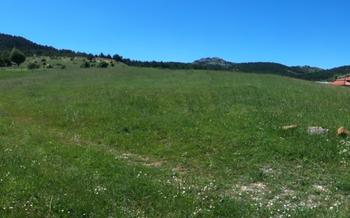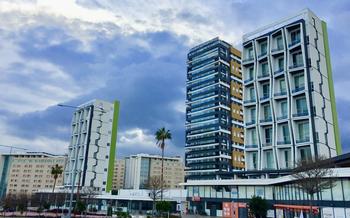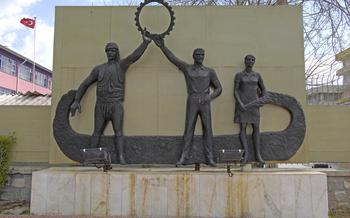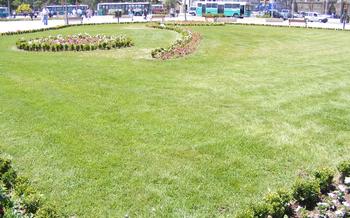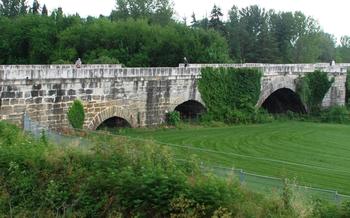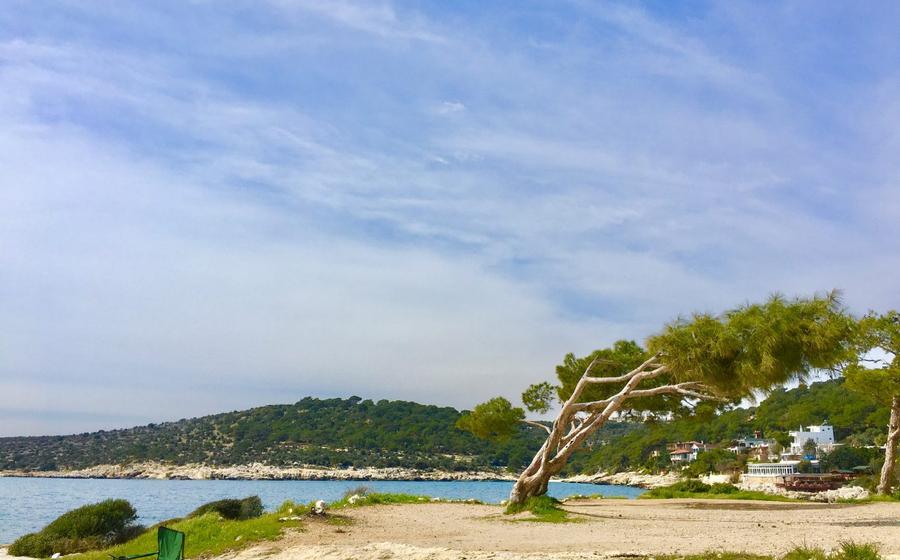
Kurtuluş Monument in Tarsus
- The Rebirth Monument in Tarsus: A Symbol of Freedom and Liberation
- Unveiling the History Behind the Rebirth Monument
- Exploring the Symbolism of the Rebirth Monument
- Tarsus: A City Steeped in History and Culture
- Finding the Rebirth Monument: A Guide for Visitors
- The Rebirth Monument in Turkish Art and Culture
- Immerse Yourself in Turkish History at the Tarsus Museum
- Discover the Culinary Delights of Tarsus
- Stroll Through the Historic Streets of Tarsus
- Venture Beyond Tarsus: Day Trips and Excursions
- The Rebirth Monument at Night: A Different Perspective
- Capture the Perfect Photo of the Rebirth Monument
- Respecting Local Customs and Traditions in Tarsus
- Solo Travel in Tarsus: Tips for Safety and Enjoyment
- Insider Tip: Uncover the Hidden Gems of Tarsus
The Rebirth Monument in Tarsus: A Symbol of Freedom and Liberation
Amidst the historic city of Tarsus, a monument of profound significance stands tall, embodying the spirit of freedom and liberation: the Rebirth Monument. Unveiled in 1932, this awe-inspiring sculpture commemorates the valiant struggle of the Turkish people during the Turkish War of Independence. The monument's captivating design, featuring a majestic female figure breaking free from chains, serves as a powerful reminder of Turkey's triumph over adversity.
Situated in the heart of Tarsus, the Rebirth Monument is easily accessible to visitors. Its central location allows for a seamless integration into any itinerary, inviting travelers to delve into the rich history and cultural heritage of this ancient city. As I approached the monument, a sense of awe washed over me. The sheer size and intricate details of the sculpture were mesmerizing, capturing my attention from afar.
In my personal experience, visiting the Rebirth Monument was a deeply moving experience. Standing before this symbol of resilience and determination, I couldn't help but feel a surge of national pride. The monument's powerful message of liberation resonated within me, reminding me of the sacrifices made by countless individuals in the pursuit of freedom.
Unveiling the History Behind the Rebirth Monument
The city of Tarsus holds a significant place in Turkish history, serving as the birthplace of many notable figures, including the philosopher Apollonius of Tyana and the apostle Paul. During the Turkish War of Independence, Tarsus became a crucial battleground, witnessing intense fighting between Turkish forces and occupying French troops. The Rebirth Monument stands as a poignant reminder of this struggle and the ultimate triumph of Turkish independence.
In 1923, following the successful conclusion of the war, the Turkish government commissioned the creation of the Rebirth Monument to commemorate the sacrifices made by the people of Tarsus and to celebrate the birth of the new Turkish Republic. The monument was designed by renowned Turkish sculptor Hüseyin Özkan, who sought to capture the essence of the Turkish spirit and the nation's newfound freedom. The construction of the monument was completed in 1932, and it was unveiled to the public with great fanfare, becoming a symbol of pride and unity for the Turkish people.
The Rebirth Monument has played a vital role in shaping the identity of Tarsus. It serves as a constant reminder of the city's rich history and the resilience of its people. The monument has also become a popular tourist attraction, drawing visitors from across the country and beyond who come to pay their respects and learn more about the Turkish War of Independence.
Exploring the Symbolism of the Rebirth Monument
The Rebirth Monument in Tarsus is a powerful symbol of unity, strength, and resilience. Its name itself encapsulates the idea of a new beginning, a resurgence after a period of struggle and adversity. The female figure depicted in the sculpture represents the city of Tarsus itself, emerging from the ashes of war and oppression. The broken chains at her feet symbolize the liberation from foreign rule and the restoration of Turkish sovereignty.
The monument's design is both simple and striking. The female figure stands tall and proud, her gaze fixed on the future. Her body language exudes confidence and determination, conveying a sense of strength and resilience. The use of bronze as the material for the sculpture adds to its permanence and solidity, emphasizing the enduring spirit of the Turkish people.
In my personal interpretation, the Rebirth Monument is a reminder of the indomitable spirit of Tarsus and its people. It represents the city's ability to overcome challenges and rise stronger from adversity. The monument serves as a source of inspiration and pride for the local community, a constant reminder of their rich history and unwavering determination.
Tarsus: A City Steeped in History and Culture
Tarsus, a city located in southern Turkey, boasts a rich and storied history that dates back to ancient times. Once a major center of the Roman Empire, Tarsus is believed to be the birthplace of the apostle Paul, adding to its religious significance. The city has played a crucial role in various civilizations throughout history, leaving behind a treasure trove of cultural and historical landmarks.
Among the notable attractions in Tarsus is the ancient city of Gözlükule, which features well-preserved ruins and remnants of Roman architecture. Visitors can explore the impressive amphitheater, colonnaded streets, and other structures that offer a glimpse into the city's glorious past. The Tarsus Museum, located in the city center, houses a collection of artifacts and exhibits that shed light on the city's history and cultural heritage, including relics from the Roman, Byzantine, and Ottoman periods.
Tarsus is also renowned for its vibrant culinary scene, offering a diverse range of traditional Turkish dishes influenced by the region's rich history. Visitors can indulge in tantalizing local specialties such as Tarsus kebabı, a succulent grilled meat dish, and keşkek, a hearty wheat and meat stew. The city's bustling markets and bazaars provide an authentic atmosphere to savor local delicacies and pick up unique souvenirs.
My personal experience in Tarsus was truly enriching. I had the opportunity to explore the ancient ruins of Gözlükule, marveling at the grandeur of the amphitheater and imagining the spectacles that once took place there. The Tarsus Museum offered a fascinating journey through history, allowing me to delve deeper into the city's past and appreciate its cultural significance. Strolling through the narrow streets of the old town, I was captivated by the charm and authenticity of Tarsus, its friendly locals, and the vibrant atmosphere that permeated the air.
Finding the Rebirth Monument: A Guide for Visitors
The Rebirth Monument stands proudly in the heart of Tarsus, a city steeped in history and culture. Located in the Cumhuriyet Square, the monument is easily accessible by foot, public transportation, or private vehicle. To reach the square by tram, simply hop off at the Cumhuriyet stop. For those driving, there are ample parking spaces available nearby.
Once you arrive at the square, you'll be greeted by the imposing sight of the Rebirth Monument. The monument is open to the public 24 hours a day, and there is no entrance fee. This allows you to visit the monument at your convenience and soak in its beauty and symbolism at any time.
To capture the best photos of the monument, visit during the golden hours of sunrise or sunset. The warm light casts a magical glow on the sculpture, creating stunning photo opportunities. Remember to bring your camera or smartphone to capture these special moments.
The Rebirth Monument in Turkish Art and Culture
The Rebirth Monument holds a significant place in Turkish art and sculpture. It is considered a masterpiece of Turkish art, embodying the nation's spirit and struggle for independence. The monument's unique design and symbolism have made it an icon of Turkish art, recognized both nationally and internationally.
Comparable to other famous monuments in Turkey, such as the Atatürk Monument in Ankara or the Maiden's Tower in Istanbul, the Rebirth Monument represents national identity and pride. It serves as a reminder of Turkey's rich history and the sacrifices made by its people to achieve freedom. The monument's enduring presence in Turkish art and culture reflects its importance as a symbol of unity, strength, and resilience.
The monument's impact extends beyond its artistic value. It has played a crucial role in promoting Turkish national identity and pride. By commemorating the Turkish War of Independence and embodying the spirit of the Turkish people, the Rebirth Monument has become a symbol of national unity and strength. It inspires feelings of patriotism and pride among Turks, reminding them of their country's rich history and the struggles that shaped its identity.
Immerse Yourself in Turkish History at the Tarsus Museum
Located just a short walk from the Rebirth Monument, the Tarsus Museum is a treasure trove of historical artifacts and exhibits that shed light on the rich and diverse past of this ancient city. As you step inside, you'll be greeted by a collection of archaeological findings, including pottery, jewelry, and coins that date back to the Roman, Byzantine, and Ottoman periods.
One of the highlights of the museum is the section dedicated to the life and legacy of Saint Paul, who was born in Tarsus. Here, you'll find artifacts related to his missionary journeys and the early Christian community in the city.
The Tarsus Museum also houses a collection of traditional Turkish handicrafts, including carpets, kilims, and ceramics, providing a glimpse into the region's rich artistic heritage.
To fully appreciate the significance of the Rebirth Monument and its role in Turkish history, a visit to the Tarsus Museum is a must. The exhibits and artifacts on display will deepen your understanding of this fascinating city and its place in the broader story of Turkey.
Discover the Culinary Delights of Tarsus
Turkish cuisine is a diverse and flavorful blend of Mediterranean, Middle Eastern, and Central Asian influences. Each region of Turkey offers its own unique culinary specialties, and Tarsus is no exception.
Must-Try Dishes and Local Specialties
-
Tarsus kebabı: A succulent grilled meat dish made with lamb or beef, served with a tangy tomato sauce and grilled vegetables.
-
Mevlana pidesi: A flatbread topped with minced meat, vegetables, and cheese, baked in a traditional stone oven.
-
Şırdan: A unique dish made from lamb's stomach stuffed with rice, spices, and herbs, grilled to perfection.
-
Tarsus salatası: A refreshing salad made with tomatoes, cucumbers, onions, and parsley, dressed with olive oil and lemon juice.
-
Katmer: A flaky pastry filled with nuts, sugar, and cinnamon, served hot and crispy.
Recommended Restaurants and Eateries
-
Kebapçı Ömür: A renowned kebab house serving mouthwatering kebabs and other grilled meats.
-
Pideci Ahmet: A local favorite for mevlana pidesi and other traditional Turkish flatbreads.
-
Şırdancı Mehmet: A must-visit spot for şırdan and other offal dishes.
-
Tarsus Salatası Evi: A small eatery specializing in the refreshing Tarsus salatası.
-
Katmerci Ali: A popular spot for katmer and other Turkish sweets.
Personal Experience
As a food enthusiast, I couldn't wait to sample the culinary delights of Tarsus. I started my culinary journey at Kebapçı Ömür, where I indulged in a succulent lamb kebab that melted in my mouth. Next, I headed to Pideci Ahmet, where I devoured a freshly baked mevlana pidesi, bursting with flavors. For a unique experience, I tried şırdan at Şırdancı Mehmet, and I was pleasantly surprised by its delicious and savory taste. To cool down, I stopped at Tarsus Salatası Evi for a refreshing salad, perfect for a hot summer day. And for dessert, I couldn't resist the crispy and sweet katmer from Katmerci Ali.
Tarsus offers a culinary adventure that will satisfy every palate. From traditional kebabs to unique offal dishes and delectable pastries, there's something for everyone to enjoy. So, come hungry and prepare to indulge in the flavors of this vibrant Turkish city.
Stroll Through the Historic Streets of Tarsus
Venture beyond the Rebirth Monument and immerse yourself in the vibrant tapestry of Tarsus' historic streets. The old town, with its narrow, winding alleys, invites you on a journey through time. Adorned with traditional Turkish architecture, the buildings whisper tales of a rich past.
Explore the labyrinthine streets and discover hidden gems nestled amidst the bustling shops and cafes. Marvel at the architectural wonders, from ancient mosques to historic churches, that bear witness to Tarsus' diverse heritage.
Stroll past local markets, where vendors display an array of colorful spices, fresh produce, and handcrafted goods. Engage with the friendly locals, who are always eager to share stories and recommendations. Savor the aroma of freshly baked Turkish delights wafting from nearby bakeries.
Take a break in one of the charming cafes that line the streets. Sip on traditional Turkish coffee or tea while savoring the vibrant atmosphere. As the sun begins to set, the streets transform into a magical realm, with the warm glow of lanterns illuminating the historic facades.
Embrace the opportunity to get lost in the labyrinth of Tarsus' old town. With every step, you'll uncover a new treasure, a hidden gem waiting to be discovered.
Venture Beyond Tarsus: Day Trips and Excursions
With its rich history and cultural diversity, Tarsus serves as an ideal base for exploring the surrounding region. Just a short drive away, visitors can discover a wealth of historical sites, natural wonders, and cultural experiences that offer a glimpse into the diverse tapestry of Turkey.
One recommended day trip destination is the ancient city of Anamurium, located approximately 40 kilometers from Tarsus. This well-preserved site boasts impressive ruins, including a theater, a necropolis, and a Byzantine church, providing a fascinating glimpse into the region's rich past.
For those seeking natural beauty, the Karatepe-Aslantaş National Park, located about 50 kilometers from Tarsus, offers a stunning landscape of mountains, forests, and waterfalls. Visitors can embark on scenic hiking trails, admire the diverse flora and fauna, and even spot the rare Anatolian leopard with some luck.
Another worthwhile excursion is to the Soli-Pompeiopolis, an ancient city founded by Alexander the Great. Located approximately 60 kilometers from Tarsus, this site features impressive ruins, including a theater, a stadium, and a necropolis, offering a glimpse into the Hellenistic and Roman periods.
For a unique cultural experience, visitors can head to the nearby town of Mut, renowned for its traditional Turkish handcrafts, particularly its beautiful carpets and kilims. Visitors can explore the local workshops, witness the artisans at work, and purchase authentic souvenirs to cherish their time in Turkey.
When planning day trips from Tarsus, renting a car offers flexibility and allows visitors to explore at their own pace. Alternatively, organized tours are available, providing transportation, guided commentary, and the convenience of a pre-planned itinerary.
The Rebirth Monument at Night: A Different Perspective
As day transitions into night, the Rebirth Monument takes on a new persona, exuding an ethereal charm under the cloak of darkness. The strategic illumination cast upon its towering form accentuates its intricate details, creating a captivating spectacle that lures visitors and locals alike.
Strolling through the tranquil streets of Tarsus after sunset, the monument emerges as a beacon of hope and resilience, its silhouette standing tall against the star-studded sky. The play of light and shadow transforms the sculpture into a mesmerizing work of art, inviting you to linger and soak in its nocturnal beauty.
Amateur photographers will find themselves in paradise, as the monument offers countless opportunities for capturing stunning night-time shots. Experiment with different angles and vantage points to create unique compositions that showcase the monument's grandeur against the backdrop of the night sky.
The atmosphere in Tarsus during the evening is palpable, with a buzz of activity filling the air. Locals and tourists alike gather in the nearby cafes and restaurants, enjoying the cool breeze and lively conversations. The monument, bathed in soft light, becomes a central gathering point, a symbol of unity and shared heritage.
Whether you're a seasoned traveler or a first-time visitor, experiencing the Rebirth Monument at night is an unforgettable adventure that will leave you with lasting memories. Embrace the magic of Tarsus after dark and discover a side of the city that is both serene and captivating.
Capture the Perfect Photo of the Rebirth Monument
The Rebirth Monument, with its stunning architecture and symbolic significance, presents an ideal subject for photographers. To capture its grandeur, position yourself at a slight angle to create depth and dimension in your shots. Utilize natural light to your advantage; the golden hues of sunrise or sunset can enhance the monument's appearance. Experiment with different camera settings, adjusting the aperture and shutter speed to achieve the desired focus and depth of field. Remember to consider the monument's surroundings, incorporating elements like trees, buildings, or the sky to create a visually appealing composition. With the right techniques and a keen eye, you'll capture breathtaking images that encapsulate the essence of this iconic landmark.
Respecting Local Customs and Traditions in Tarsus
When visiting Tarsus, it's essential to be respectful of local customs and traditions. Turkey is a predominantly Muslim country, and understanding its religious and cultural sensitivities is crucial for a smooth and enjoyable trip. Dress conservatively, covering your shoulders and knees when visiting religious sites or conservative neighborhoods. Avoid public displays of affection, as they may be frowned upon in some circles. Learn some basic Turkish phrases to show respect and connect with locals. Be mindful of prayer times, as many businesses and attractions may have reduced hours during these periods. Remember, cultural exchange is a two-way street, and embracing local customs is not only respectful but also a wonderful way to learn and grow.
A personal anecdote to illustrate this point: During my visit to Tarsus, I made an effort to learn a few Turkish phrases, such as "Merhaba" for hello and "Teşekkür ederim" for thank you. The locals were delighted by my attempt to speak their language, and I felt a genuine connection with them. By showing respect for their culture, I was able to have more meaningful interactions and create lasting memories.
Solo Travel in Tarsus: Tips for Safety and Enjoyment
As a solo traveler, especially if you're a woman, safety is paramount. Tarsus is generally a safe city, but it's always wise to exercise caution and be aware of your surroundings. Stick to well-lit areas at night, avoid walking alone in secluded places, and be mindful of your belongings.
Embrace the opportunity to meet other travelers and locals. Join organized tours or group activities to connect with like-minded people. The locals in Tarsus are known for their hospitality, so don't hesitate to strike up conversations and ask for recommendations.
Make the most of your solo adventure by exploring at your own pace. Visit museums, historical sites, and local markets at your leisure. Indulge in Turkish cuisine at traditional restaurants and cafes. Take advantage of the opportunity to learn about the local culture and customs.
My personal experience as a solo traveler in Tarsus was enriching and empowering. I felt safe and welcomed throughout my stay. I highly recommend exploring this beautiful city on your own, embracing the freedom and flexibility it offers.
Insider Tip: Uncover the Hidden Gems of Tarsus
Beyond the well-known attractions, Tarsus holds a treasure trove of hidden gems waiting to be discovered. One such gem is the ancient underground city, located just outside the city center. Explore its intricate tunnels, chambers, and ventilation systems, offering a glimpse into the city's rich past.
For a unique culinary experience, venture into the local markets and savor the flavors of traditional Turkish delights. Indulge in freshly baked pastries, aromatic spices, and mouthwatering street food. Don't miss the chance to try "tantuni," a local specialty made with grilled meat wrapped in lavash bread.
Immerse yourself in the city's vibrant culture by attending traditional Turkish coffee ceremonies or henna nights. These events offer a glimpse into local customs and traditions, allowing you to connect with the warm and welcoming people of Tarsus.
Discover the lesser-known historical sites, such as the ancient Roman aqueduct or the hidden churches and mosques scattered throughout the city. These hidden gems provide a glimpse into the diverse cultural and religious heritage of Tarsus.
Whether you seek adventure, history, or cultural immersion, Tarsus offers a wealth of hidden treasures waiting to be explored. Embrace the spirit of discovery and uncover the secrets that make this city truly special.

